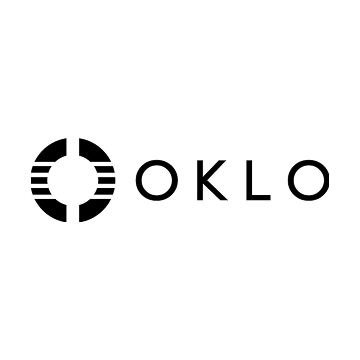Oklo inc (OKLO.US) 2025年第二季度业绩电话
文章语言:
简
繁
EN
Share
Minutes
原文
会议摘要
Highlights strategic partnerships, streamlined regulatory processes, and innovative fuel sourcing in nuclear energy deployment, emphasizing scalability, cost reduction, and policy support for advanced reactor projects.
会议速览
The meeting announced the financial results and business progress for the second quarter of 2025, emphasizing that the discussions included forward-looking statements and reminding participants to pay attention to potential risks and uncertainties. The meeting also provided detailed information on the relevant financial reports, which can be obtained on the investor relations page of the company's official website.
The dialogue emphasizes the recent federal policies' role in driving the development of advanced nuclear technology, including accelerating licensing, strengthening the fuel supply chain, and increasing energy independence. Okla Company directly benefits from its technological advantages and strategic positioning. The policies cover licensing reform, fuel recycling, accelerating safe site deployment, and strengthening loan programs, providing support for Okla's project economics and early deployment. In addition, the AI Action Plan calls for the establishment of reliable power sources, and Okla's distributed baseload power solutions meet the demand. It is expected that the policies and commercial incentives will continue to strengthen, promoting the application of advanced nuclear technology.
Oakville Corporation is committed to providing clean, reliable, and cost-effective global energy solutions through advanced nuclear technology. Its competitive advantage lies in three key strategies: building, owning, and operating power plants; utilizing small, scalable designs to respond quickly to market demands; and leveraging mature liquid metal reactor technology to commercialize directly without expensive demonstration plants. In addition, the company offers flexibility in using fresh, recycled, and low-concentration alternative fuels to accelerate deployment and achieve long-term growth.
In the past quarter, we have made significant progress in various aspects of the milestone framework, including licensing applications, project execution, on-site development, customer growth, and strategic partnerships. We completed the assessment of the NRC preparatory phase, obtained formal review of the operating license operator's subject report, and selected CWIT as the main contractor for the initial project of Aurora Powerhouse. In terms of customers, we have established commercial partnership opportunities with the Department of Defense's Liberty Energy and ISRO and Power, while maintaining financial discipline, controlling cash consumption, and maintaining a strong financial position.
The project team made significant progress on regulatory priority issues this quarter, including completing the NRC readiness assessment, advancing the Aurora INL joint license application, and obtaining NRC acceptance of operator topical reports. Additionally, the acceleration of the Tariff Power review timeline and cost reform by the NRC will benefit future licensing pathways. The team also launched a public regulatory dashboard to transparently showcase progress in the nuclear fuel and radioactive isotopes sector, ensuring all stakeholders are informed of developments.
The dialogue discussed the construction of a flexible, cost-effective, and resilient nuclear fuel strategy through diversification of fuel sources, including government stockpile utilization, commercial partnerships, and long-term recycling capabilities. This strategy not only supports immediate deployment needs, but also plans for long-term fuel self-sufficiency, achieving cost optimization and market adaptability through the combination of advanced enrichment technology and recycled nuclear materials.
Discussed strategies for effectively reducing the costs and time delays of nuclear energy projects, such as adopting liquid metal sodium cooling designs, simplifying safety systems, utilizing non-nuclear supply chains, and collaborating with international partners to achieve faster and more cost-effective deployment. Also mentioned partnerships with companies like Kiwi and Virtus to advance the development of the Aurora INL project and data center solutions, showcasing the vast potential for nuclear energy in the future of energy and technology fields.
Oakland has reached a partnership with Liberty Energy aimed at providing reliable power solutions, transitioning from existing gas-fired power generation to nuclear energy, and accelerating the clean energy transition. At the same time, Oakland has been selected as the preferred supplier for advanced nuclear deployment at US military bases, signaling the important role of nuclear energy in national security and energy resilience. Financially, Oakland achieved expected cash flow in the second quarter and completed a successful equity financing, enhancing its financial strength to support its growth strategy. Oakland's business model combines vertical integration, long-term power sales, and fuel recycling, demonstrating significant advantages in the advanced nuclear energy industry.
Discussed the policy challenges of nuclear fuel recycling under current legal restrictions, as well as how Oakla can promote nuclear energy recycling work without violating existing policies, while emphasizing the company's global service vision as an energy platform.
The opportunity to address the underutilization of nuclear fuel through advanced recycling and fast reactor technologies was discussed against the backdrop of the U.S. Department of Energy's failure to fulfill its responsibilities for nuclear waste disposal. This not only solves the fuel supply problem, but also significantly reduces waste volume and radioactive half-life, providing a wider range of disposal options and reducing pressure on communities. Through collaboration with government and private sectors, facility construction and material recovery are being accelerated to realize dual economic and environmental benefits.
The dialogue revolved around Hexam Group's Atlas project, discussing the shift in production from lithium to uranium, particularly achieving efficient uranium separation through laser isotope separation technology. This technology has shown significant advantages in cost, efficiency, and operational characteristics, with the potential to reduce fuel costs and improve the quality of medical isotopes. Meanwhile, Hexam Group is actively seeking partners to accelerate technological innovation in response to market demand for new investments and technologies, driving industry transformation.
Discussed whether Acqua Company could advance revenue recognition by participating in early power sales in the gas-fired power generation project. It was also mentioned that negotiations are currently ongoing with customers on specific commercial terms, but the specific information about the partners has not been disclosed yet.
Discussed the adaptability of nuclear reactor designs to different fuels, especially the advantages of being able to handle degraded fuels, as well as the strategic differences in deploying nuclear energy in the back-end (such as data centers) and front-end power markets. Emphasized the potential and challenges of back-end applications, while pointing out the high value of front-end markets in certain regions. Overall, the strategy needs to be flexible and adjusted according to region and customer demand.
The dialogue revolves around the application of small modular reactors (SMR) in the radioactive isotope market, discussing the potential of recycling long-lived isotopes and low-cost production of specific isotopes through nuclear fusion technology. It emphasizes the importance of establishing an isotope production ecosystem and how this will promote research and development, opening up new market demand.
Discussed the milestones and development process differences of nuclear energy projects in military or defense facilities, emphasizing the flexibility of the defense department in project approval, as well as the importance of nuclear energy projects in enhancing military mission capabilities. The project needs to adapt to seasonal construction windows, while utilizing the heat generated by nuclear energy not only to convert into electricity, but also directly used for heating infrastructure, demonstrating the unique advantages of nuclear energy in defense energy needs.
The conversation discussed the strategy of converting commercial customer orders, emphasizing the importance of building long-term and in-depth partnerships, as well as how to accelerate order conversion through different means, including advance payments and asset-level investments. At the same time, it mentioned the innovative model of combining natural gas and nuclear energy, and how to adjust the pace and strategy in customer discussions to better seize market opportunities.
The discussion focused on the significant acceleration of project approval and construction processes in the nuclear energy industry under policy support. It mentioned NRC's positive response to policy goals, as well as smooth progress in the pre-application phase, all of which laid a good foundation for project advancement. Additionally, it explored the possibility of faster approval processes through different authorization pathways, and the positive impact of increasing fuel supply on industry development, collectively creating an ecosystem conducive to the rapid development of the nuclear energy industry.
The conversation discussed the announcement schedule for the Idaho power plant's Ppas program, as well as whether it can ensure a 75MW fuel supply. It was mentioned that government support for plutonium fuel may accelerate the process, and it was discussed whether it is possible to announce multiple projects simultaneously after overcoming initial regulatory obstacles. The conversation pointed out that the power demand for the Idaho power plant is continuously increasing, and the project also brings other additional benefits.
The dialogue focuses on innovation and cooperation in the field of nuclear energy, emphasizing the construction of fast neutron reactors and their diverse applications, such as fast neutron radiation capabilities and thermal foundation cooling system pilot projects. Discussions were held on partnerships with governments, industries, and academia to accelerate the construction and deployment of nuclear reactors to achieve sustainable global energy supply. Additionally, the importance of nuclear fuel cycle technology was mentioned, as well as establishing efficient cooperation models to overcome industry challenges, and anticipating the key role of nuclear energy in future energy systems.
The strategy of accelerating reactor deployment by submitting reports to the nuclear management committee in advance was discussed, emphasizing the significant acceleration of subsequent deployments, as well as innovations in operator training and cross-project experience sharing, aimed at enhancing the efficiency and safety of the entire industry.
Discussed in the nuclear energy industry is the method of reducing nuclear-grade components and adopting modern manufacturing technology to optimize the supply chain and lower construction costs. Emphasized is the importance of passive safety design, and how these improvements can realize the true cost potential of nuclear energy.
Discussed the stagnant development of the nuclear energy supply chain since the 1970s, emphasizing the importance and cost-effectiveness of modern production processes, quality control, and compliance. It was proposed that by adopting more modern and efficient methods, combined with commercial-grade standards and industrial quality assurance, cost reduction could be achieved. Additionally, new ways of cooperating with traditional suppliers and leveraging the advantages of new technologies and materials, such as the application of stainless steel alloys in sodium systems, to optimize the supply chain were explored. Lastly, it was stressed that by establishing multiple partnerships and finding the best collaboration model, the economic viability and sustainable development of nuclear energy technology can be promoted.
Challenges in transitioning from light water reactors to advanced reactor technologies were discussed, particularly the advantages in materials compatibility and operating temperature offered by sodium-cooled fast reactors, providing a broader potential for development. In comparison, gas-cooled reactors face more technical obstacles in large-scale applications, such as pressure differentials and graphite usage. Sodium-cooled fast reactors are believed to have unique potential in revolutionizing the nuclear energy supply chain.
The dialogue emphasized the huge potential of the nuclear energy field under recent policy changes, reviewing a series of supportive laws and executive orders since the Obama administration, including NICA, NEMA, and the "Inflation Reduction Act", among others. It discussed how these policies create favorable conditions for the development of nuclear energy, especially in addressing key challenges such as licensing and fuel supply. An optimistic outlook was expressed towards the industry's prospects, with expectations for further development in the future.
要点回答
Q:What are the key federal actions that are accelerating momentum behind advanced nuclear technologies?
A:The key federal actions include sweeping executive orders, major legislation, and national infrastructure strategies that reflect a coordinated federal push to speed up the deployment of advanced nuclear technologies, strengthen domestic fuel supply chains, and enhance energy independence.
Q:How are the new executive orders affecting the nuclear industry?
A:The new executive orders are marking a historic shift in federal policy towards advanced nuclear by recognizing civil nuclear energy as a national and economic security priority. They are unlocking access to key government assets and speeding up regulatory reviews, among other actions, which align with Oakfield's licensing strategy, customer partnerships, and long-term cost advantage.
Q:What benefits do the recent executive orders bring to Oakfield?
A:The recent executive orders benefit Oakfield by supporting faster licensing, faster deployment, and better project economics for first-of-a-kind deployments. They align with the company's strategy by revitalizing the domestic nuclear fuel supply chain, prioritizing reactor deployment at national security locations, and mandating licensing reform fees and the for the Re.
Q:What are the key provisions of the 'One Big, Beautiful Bill' that impact Oakfield?
A:The 'One Big, Beautiful Bill' provisions that impact Oakfield include robust investment and production tax credits, strengthening the loan program office with the Energy Dominance Finance Program, accelerating NEPA reviews, and allowing for MACRS depreciation for assets. These provisions improve project economics, provide additional certainty for early-stage deployment, and support First of a Kind deployments.
Q:How does the federal government's AI Action Plan affect the demand for advanced nuclear?
A:The federal government's AI Action Plan calls for a rapid expansion of AI infrastructure and recognizes the need for new sources of reliable, dispatchable power to support this growth. Advanced nuclear reactors are uniquely suited to deliver distributed baseload power for mission-critical AI workloads, creating commercial and policy momentum that benefits Oakfield.
Q:What is Oakfield's mission and how does it align with current trends?
A:Oakfield's mission is to deliver clean, reliable, and affordable energy at a global scale. This aligns with current trends in policy, technology, and customer demand, as the company's design choices and business model are geared towards meeting the needs of a growing market for advanced nuclear.
Q:What are the three key strategies that Oakfield employs to gain a competitive edge?
A:The three key strategies that Oakfield uses to gain a competitive edge are: 1) building, owning, and operating powerhouses under long-term contracts to create recurring revenue and efficient regulatory processes; 2) deploying small, scalable designs that allow for quick deployment, matching customer demand, and leveraging existing supply chains; 3) using a proven liquid metal design with worldwide operating experience and the flexibility to utilize fresh fuel, recycled fuel, and alternative fuels.
Q:What progress has Oakfield made regarding its licensing and project execution?
A:Oakfield has made meaningful headway across all elements of its milestone framework, including advancing NRC engagement, completing Phase 1 pre-application readiness, and having a license operator topical report accepted for review. The company also selected Cwit as its lead constructor for the first Aurora Powerhouse at INL, expanded its customer pipeline with new agreements, and kept its cash burn in line with expectations.
Q:How does Oakfield's fuel strategy support its competitive advantage?
A:Oakfield's fuel strategy supports its competitive advantage by enabling a differentiated approach that leverages multiple sources of fuel, including access to government stockpiles, commercial supply partnerships, and long-term recycling capabilities. This approach provides greater flexibility, cost control, and resilience compared to traditional fuel models.
Q:What are the key design features of Oakfield's nuclear reactor and how do they contribute to cost-effective and rapid deployment?
A:The key design features of Oakfield's nuclear reactor include inherent and passive safety, a small physical footprint, and a design that simplifies the architecture and streamlines regulatory reviews, which reduces capital and operating costs and allows for quicker deployment. The design also enables the use of standard, shippable components and leverages mature, non-nuclear supply chains for cost-effective manufacturing.
Q:What are the capabilities of Kiwi, and what project have they been selected for?
A:Kiwi is an engineering and construction firm with expertise in complex energy infrastructure, including nuclear projects. They bring integrated procurement and asset and component fabrication capabilities that align with the modular, repeatable design approach of the Aurora INL project. They have entered into a master services agreement with the intent to support the full scope of design, procurement, and construction for the Aurora INL project.
Q:What is the purpose of the partnership with Korea Hydro and Nuclear Power?
A:The partnership with Korea Hydro and Nuclear Power is focused on exploring opportunities to collaborate across a range of areas, including project development, licensing, manufacturing, and supply chain coordination. This collaboration reflects a shared interest in deploying advanced reactors globally and driving innovation across the nuclear value chain, aligning with the strategy of forming international partnerships for commercialization and accelerated deployment.
Q:What is the focus of the joint development agreement with Virtus?
A:The joint development agreement with Virtus focuses on the co-development of integrated power and cooling solutions for data centers. This partnership aims to take advantage of the ability to colocate power generation and compute infrastructure, building smarter nuclear power systems for compute-intensive infrastructure. It involves using steam from powerhouses to drive chillers, improving energy efficiency and reducing total energy costs for data centers.
Q:What is the strategic significance of the partnership with Liberty Energy?
A:The partnership with Liberty Energy is significant as it allows for the integration of reliable power with clean energy solutions. Liberty, an early investor and former board member, has continued to collaborate with OAKVA to provide a phased approach that starts with gas generation and transitions to nuclear power as it becomes available. This partnership demonstrates validation of OAKVA's business model and offers a path to zero-carbon energy over time, aligning with customer needs for uninterrupted power and long-term energy certainty.
Q:What recognition has OAKVA received from the U.S. Air Force?
A:OAKVA has been selected by the U.S. Air Force as the intended awardee for the first advanced reactor deployment at a U.S. military installation. This is a major milestone for OAKVA and the broader advanced nuclear sector, recognizing the role nuclear power can play in national security and energy resilience at distributed and remote sites. OAKVA is working with the U.S. Air Force and Defense Logistics Agency on next steps.
Q:How does OAKVA plan to address the challenges of nuclear fuel management and recycling?
A:OAKVA plans to address nuclear fuel management and recycling by developing technology that allows for the recycling of spent nuclear fuel in a fast reactor. This process enables the harnessing of unused materials, creating a significant reserve of material. Advanced recycling techniques, such as those used by OAKVA, can recycle spent fuel in a cost-effective and transformative way. Recycling not only helps in dealing with fuel supplies but also changes the paradigm around waste management by reducing volume and altering the characteristics of the waste, which can then be managed more effectively for disposal.
Q:What are the potential applications of the technology initially developed for uranium enrichment?
A:The technology developed for uranium enrichment can be used in the production of medical isotopes, in creating higher quality targets with enriched isotopes for radiation and atomic alchemical facilities, and potentially in selling the products themselves.
Q:How is the current market context influencing the development and commercialization of new investment capacity for uranium enrichment?
A:The current market context is marked by a significant pressure of new technology and a massive demand for new investment capacity, which is bringing forward more innovative approaches to uranium enrichment with the potential to change the cost curve.
Q:What could potentially lead to revenue recognition for the company in relation to the deal with Liberty?
A:Revenue recognition for the company could potentially arise if there is a mechanism for the company to participate in early power production related to the projects they are working on with Liberty.
Q:Why is the company's reactor design unique in its capability to run on downblended fuel, and what are the potential uses of this type of fuel?
A:The company's reactor design is unique because it can accommodate a specific type of downblended fuel that includes highly enriched uranium (HEU) and plutonium, which are both potential sources of fuel. This type of fuel can be useful for various applications, especially in fast neutron reactors.
Q:What advantages does the company have in the radio pharmaceutical market, and how are they prioritizing specific isotopes for development?
A:The company has advantages in the radio pharmaceutical market due to its processing capability, which allows for the isolation of specific isotopes that are in high demand for certain drugs or applications. They are prioritizing near-term opportunities and potential scaling advantages, engaging in pilot efforts at Idaho, and looking at ways to invest or partner in the supply chain to enhance their moats in production and sourcing of stable isotopes or target materials.
Q:What are the potential benefits of atomic alchemy and recycling efforts in relation to isotope production?
A:The potential benefits of atomic alchemy and recycling efforts include unlocking new industrial applications for longer-lived isotopes that have been held up in waste, and accessing a broader range of isotopes that can be produced in bulk quantities through recycling. Additionally, the development of a reactor designed for cost-effective production of neutrons can irradiate materials to produce targeted isotopes, which can be more cost-competitive than existing methods.
Q:What could the flexibility and versatility of different isotopes open the door to?
A:The flexibility and versatility of different isotopes can open the door to doing more things in markets that have an inelastic state of demand, allowing suppliers to continue providing as much as the market will take.
Q:How might the production and availability of a diverse set of radioisotopes impact growth?
A:Growing the production and availability of a diverse set of radioisotopes can unlock more growth by encouraging investment in their use, which can create a significant ecosystem and foster a mindset of abundance for these isotopes that are currently underutilized.
Q:What are the potential impacts of executive orders on project timelines and reviews?
A:Executive orders have shifted priorities, with a strong focus on defense use cases which may decelerate and a potential for more streamlined or focused reviews on environmental aspects due to their interest in leveraging defense use cases.
Q:What are the unique aspects of working on a project in Alaska?
A:Working on a project in Alaska presents unique challenges and considerations, including the nature of the facility and the seasonal construction window, necessitating a careful approach to site work and optimization against these factors.
Q:How does the Air Force's partnership with industry view nuclear's role in bolstering mission capabilities?
A:The Air Force views nuclear energy as a significant opportunity to bolster their mission capabilities and is working with industry to explore different models for delivering this capability, prioritizing internal-facing and operational energy solutions.
Q:What value does the nuclear system provide beyond electricity?
A:Beyond electricity production, the nuclear system provides a significant amount of steam that can be utilized for heating infrastructure, which has substantial value, especially in locations like Alaska where heat is a critical need.
Q:What is the current status and future outlook of Liberty Project milestones?
A:The Liberty Project is progressing with ongoing detailed site work and is actively developing with a focus on sustainable and scalable partnerships, rather than rushing into a PPA. The discussions with customers have generated enthusiasm and are advancing the opportunity for deepened collaboration.
Q:How is the partnership approach with commercial customers evolving?
A:The partnership approach with commercial customers is evolving by taking a longer-term perspective and focusing on deep, sustainable partnerships that go beyond optimizing on a PPA. There is an increased focus on gas infrastructure and a recognition of the value of nuclear as a long-term solution, balancing discussions on different customer sites and timeframes.
Q:What is the anticipated timeline shift due to executive orders and regulatory changes?
A:The anticipated timeline shift due to executive orders and regulatory changes is positive, with a reduction in the review process from 24 to 36 months to an 18-month period. The NRC is being quite responsive, and there are tangible benefits already seen, such as the acceleration of the licensing process and pre-application activities.
Q:What is the current status of interest in power generation from the Idaho plant?
A:There is more interest in power generation from the Idaho plant from various parties and in different ways, along with other benefits obtained from it.
Q:What is the current status of the pilot thermal based cooling system at the Idaho plant?
A:The pilot thermal based cooling system is being set up at the Idaho plant, and it is gaining interest from different stakeholders, indicating a mix of off-take and use case applications.
Q:What is the unique positioning of the company with five tons of material and its potential for power generation?
A:The company is uniquely positioned with five tons of material to run the plant in a normal way, with the potential to increase power generation up to 75 MW.
Q:What is the approach towards multiple power plants and potential deployment timing?
A:The approach involves building out the right pieces of infrastructure and targeting strategic partnerships for future plants, possibly after the initial regulatory hurdles are overcome.
Q:How does the company plan to address potential regulatory hurdles for future plants?
A:The company plans to use the strategy of pre-application and topical reports to address regulatory hurdles, leveraging a strategic approach rather than a less successful conciliatory strategy.
Q:What is the strategic significance of the company's model in dealing with regulatory issues?
A:The strategic significance of the company's model lies in its ability to deal with generic, broad, cross-cutting issues and set the stage for successful licensing of subsequent plants, not just the first one.
Q:What does the licensing approach for additional plants entail?
A:The licensing approach for additional plants involves leveraging existing NRC processes and resources to minimize operational considerations and set the stage for quicker licensing of subsequent plants.
Q:What is the focus regarding the supply chain and nuclear materials for future plants?
A:The company is focusing on utilizing a mix of non-nuclear and nuclear-specific materials, with 70% being non-nuclear and 30% nuclear, and exploring options with partners like Korea and the US for future plants.
Q:What is the 'idiot index' and how does it relate to the cost potential of nuclear energy?
A:The 'idiot index' is a term inspired by SpaceX and Elon Musk, representing the ratio of the actual delivered cost of something divided by its actual cost of raw materials. In the context of nuclear energy, it suggests there is significant room for cost improvement as the industry often incurs high multiples on costs.
Q:What are the two main ways to reduce costs in nuclear power plants?
A:The two main ways to reduce costs in nuclear power plants are utilizing passive and inherent safety features which reduce the need for safety-related systems and components, and modernizing the delivery processes, manufacturing methods, and quality assurance protocols to make them more efficient and effective.
Q:How can the nuclear supply chain benefit from modernization efforts?
A:The nuclear supply chain can benefit from modernization efforts by updating processes and procedures, and adopting modern manufacturing methods and quality assurance standards. This can lead to cost savings and more efficient production, taking advantage of advances in the industrial sector that were not previously considered cost-effective in the nuclear industry.
Q:Why might legacy suppliers be difficult to modernize and what alternatives are there?
A:Legacy suppliers may be difficult to modernize because they are often resistant to change and are used to their established methods. However, there are alternatives such as partnering with new and existing suppliers, and encouraging legacy suppliers to modernize as a pathway to experience and cost-effective operations.
Q:What is the significance of the 'material advantage' for nuclear technology?
A:The 'material advantage' for nuclear technology refers to the physical cost drivers being generally favorable for nuclear, as the technology has a material advantage over alternatives. This can simplify and reduce the costs associated with construction and operation.
Q:How do sodium fast reactors compare to light water reactors in terms of modernization and material compatibility?
A:Sodium fast reactors offer a broader envelope of opportunity for modernization and material compatibility compared to light water reactors. They can bridge outside of the traditional nuclear supply chain more effectively due to their unique design, material compatibility, and operating temperatures.
Q:What is the impact of recent political changes on the nuclear industry?
A:Recent political changes, notably President Trump's executive orders and the Inflation Reduction Act supporting nuclear, have significantly impacted the nuclear industry. These changes have led to substantial shifts in the industry landscape and created policy support that helps address challenges such as permitting and fuel supply.

Oklo inc
Follow





